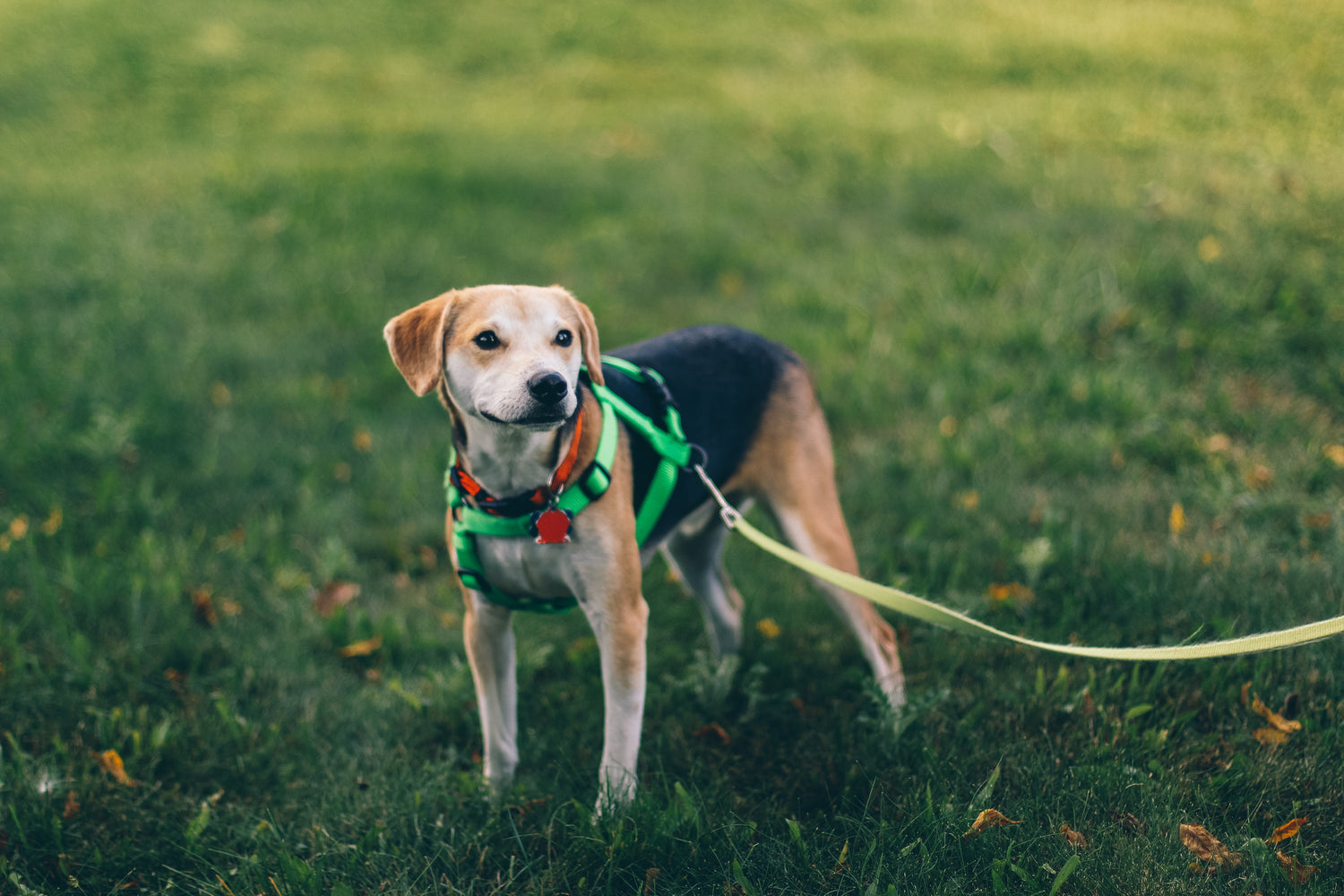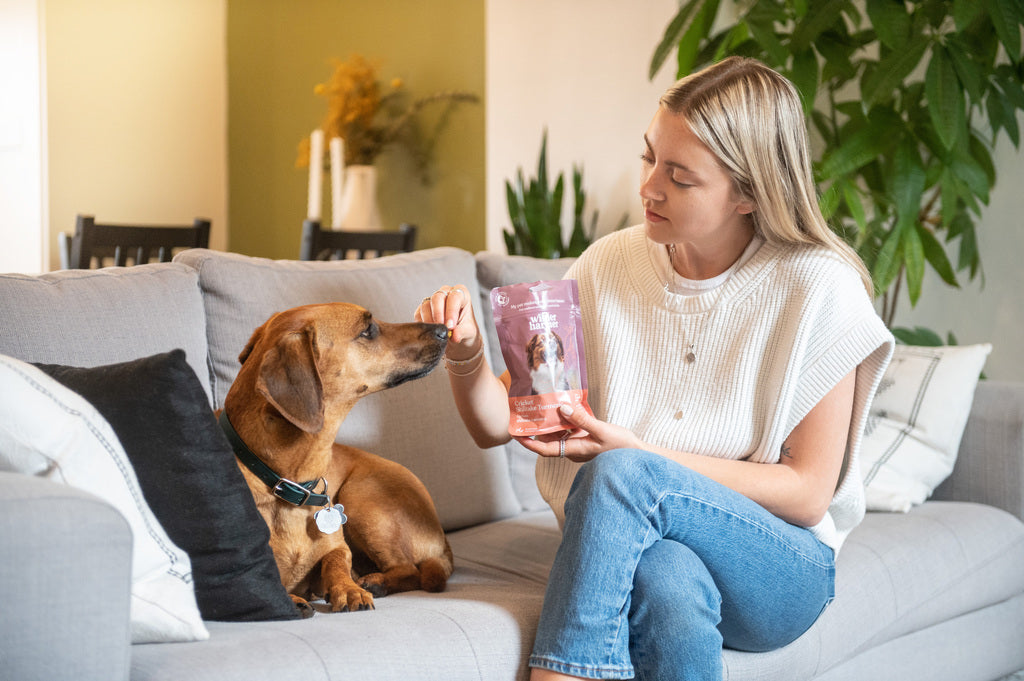Here at W&H, we’re all about dogs. So much so that we are not against the idea of calling dog owners “pet parents”. This is because, in our eyes, the relationship between a human and a dog can, in many ways, parallel that between a parent and a child. A dog’s basic needs gravitate around you - he is fed, bathed, offered shelter, love and medical support by you. That being said, there is often a dissonance between the act of wanting to take home that cute puppy from the shelter, and the first couple of weeks at home with your new best friend. In the first installment of a series centered around the reality of owning a dog, we offer to you a little written reminder of the back at home basics!
Let us start with puppies. Puppies are intense. They have bouts of seemingly unbridled energy, alternated by immense fatigue. They eat everything in sight (sometimes to their own detriment), clamour for your undivided attention and do their business everywhere. However, they are also living hugs, the best therapy, and a source of unconditional love! That being said, even a grown dog, adopted from a shelter, will benefit from this little reminder of what it really means to welcome a dog in your life: it is an adjustment for both human and dog.
The Warm-Up Phase
All dogs that are switching environments go through a period of time where they adjust to their new surroundings, it is quite normal. For a dog, this can range between going from being surrounded by litter mates competing for attention, to being the only dog in sight, with only you as a source of warmth and attention. It can also mean coming from a stressful environment (backyard breeder, shelter, pet store) to the calm and security of your home. Either way, all dogs need a “cooling off” period - it’s a time to acclimate to new surroundings. During this period, everything is new: sights, sounds and RULES. It would be wise to instigate a routine early on - regular feeding hours, walks and comings-and-goings - so that your dog can get a sense of what to expect from you, which alleviates stress! In fact, when dogs have a sense of purpose, they thrive! Even if your new buddy is just a puppy, routine will offer a sense of security.
One of the first controversial issues faced when becoming a new pet parent is: where will my dog sleep? Without getting into the debacle further, let us skim the options:
CRATE: Crate training minimizes messes, mimics your dog’s instinctual desire to find solace in a cave-like structure (safe space) and doubles as a way to curb stress in dogs who suffer from separation anxiety. When properly introduced, the crate is highly beneficial.
DOG BED: Get your pooch his own designated sleeping quarters and reward him with treats for staying in it. When used properly, a dog bed will also double as a safe space too!
YOUR BED: The main issue surrounding sharing bedspace with your pooch is possessiveness - your dog must always understand that he is not king of the hill and must not exhibit aggressive behavior towards sharing the sleeping space. Also, how amazing is it to cuddle with a dog?
When it comes to sleeping quarters, we believe that it is a matter of personal preference as there is no across-the-board option that yields more positive results. All in all, as with all issues surrounding rearing your dog: clear boundaries work best.
Material Goods: A Shopping List
Getting a dog means getting proper supplies too! There are many things that pet parents should have on hand with the arrival of a dog companion. Some of the basics are:
- Collar (don’t forget to get an adjustable one for a dog that is still growing!)
- Medallion (with your dog’s name and your number)
- City approved, up-to-date dog license
- Leash for walking (we love the leather ones you can clip on yourself. However, sturdy non-retractable leashes work well too). When it comes to leashes, it is best to remain in control. For this reason, we would recommend leashes that are tied closely to you, non-retractable and sturdy in order to avoid surprises and maintain control of your dog at all times.
- Harness or lead - gentle no-pull equipment is the best way to get a head start on good walking habits! On this subject it is worth noting that different cities have different bylaws regarding harnesses, muzzles and leads. These bylaws or “breed specific legislations”, focus on breed and size and you should be informed of them in order to avoid hefty fines!
- Toys: Younger dogs require soft toys. An all-around must is interactive toys in which you can hide treats - it keeps dogs quite busy. Some dogs also like toys (stuffed toys, mostly) that act as their “babies” - they carry them around and sleep with them. Let us take this time to remind you that the best kind of play time is when you are an active participant in the play process; “tug-of-war”, “catch” are exceedingly simple games that require only the dog, a single toy and you - your participation, however, is priceless!
- Outdoor gear: If you own a dog that is small, short-haired or older and live in colder climes, you may want to invest in some doggy apparel. Boots to protect against the cold and salted walkways and a little jacket to ward off the cold are necessary!
- Food: We recommend staying away from brands that use fillers and contain sugar. Gravitate towards pet feed that contains wholesome ingredients, that is organic and that provides your dog with full nourishment and a clean conscience for you! Also, be mindful of choosing pet food that is appropriate for your dog’s age and/or conditions such as allergies and medical conditions. At the end of the day, its your responsibility to make the best choice for your dog!
- Brush: Long-haired dogs require regular brushings to keep their coats tangle-free. Get your pooch used to being brushed by giving him treats and he’ll consider it just another day at the spa!
- Treats/rewards: These are essential for training as food is generally considered as a high-value resource across the board for dogs. Since you will be using lots of them, better lean towards a healthy option! Go for something hypocaloric, with a limited list of ingredients that you can recognize!
Human Care
The experience of having a dog requires your input of time and energy yet the payback is immeasurable. That being said, the care of your canine buddy extends itself to other human practitioners along the way. Before you bring a dog into your life, find a good veterinary practitioner who is not far from your home. Make sure that your dog receives all his shots and gets a clean bill of health as soon as possible. Some other humans will accompany you on your journey of caring for a dog, such as a dog trainer! Some places combine dog training with dog housing, like Guides Canins, offering a holistic and healthy experience for you and your pup! The most important human in your dog’s life, however, will be you. Your relationship with your dog will be constant and ever-evolving and the rewards incalculable. The reason why you will now fall into the realm of “pet parent” is because this creature will now depend on you for it’s basic needs and for an ultimately healthy life! Enjoy the journey, we will be happy to help you along the way.
Discover our nourishing and sustainable foods for dogs
Discover our goodies



